Crowded game parks are not the only way to see wildlife in Southern Africa. If you’re an adventurous traveler seeking a real wilderness experience, the Central Kalahari Game Reserve (CKGR) in central Botswana is your dream come true. It’s the largest and most remote reserve in Southern Africa. In fact, at over twenty thousand square miles, it is the second largest wildlife reserve in the world and a great stop on your Botswana safari.
*This article may contain affiliate links. We receive a small commission at no extra cost to you.*
There is no Internet in the Central Kalahari and no phone coverage. No shops or fuel or electricity, and most importantly, no water (except at the Game Scout Camp at Xade). Instead, what you get is vast blue skies and a chance to experience one of the wildest places on earth where large predators may walk through your unfenced campsite (we prefer the roof top tents.)
The Central Kalahari is only accessible by 4-wheel-drive vehicle and you need be completely self-sufficient. They won’t let you through the gate if you aren’t.
If you want to do some Trans-Kalahari travel, the drive between Khutse (in the south) and the northern section of the Central can only be taken with a minimum of two 4×4 vehicles for safety. And bear in mind that the drive takes two days.
Central Kalahari Game Reserve Regulations
- Speed limit within the reserve: 40 km/h
- Off road driving strictly prohibited
- Take all your litter with you
- Do not feed or harass wildlife
- Night drive is prohibited
Please, follow these rules and be aware of other general safari etiquette to make your visit to the Central Kalahari more enjoyable and safe.
Opening hours:
- 1 April – 30 Sept : 06:30 to 18:30
- 1 Oct – 31 March : 05:30 to 19:00
When to Travel to the Central Kalahari, a Highlight of your Botswana Safari
January through April is the classic time to visit. It brings the end of the rainy season, followed by a procession of fresh grass, the grazers that eat it, and the predators who eat the grazers. The roads can be a bit mushy and odds are you will get stuck so it is advisable to travel in groups of two vehicles. We visited in the dry season (September) and still saw predators ranging from black-maned lions and cheetahs, to bat-eared foxes, honey badgers, and aardwolves.
If you are not a confident off-road driver, I would visit during the dry season to avoid getting stuck in the mud.
Be Self-sufficient
You need to be completely self-sufficient when visiting the Central Kalahari. This means, you need to have all the water, food and fuel needed for your trip, plus several extra days worth of supplies in case something goes wrong. If you do break down or get stuck, help may not appear immediately, as the central gets relatively few visitors.
If renting a 4×4, choose one that has a long-range fuel tank. The closest fuel station is in the village of Rakops, three hours away from the Matwere gate on the east side of the park, and the availability of fuel is not guaranteed. Consider taking some extra fuel cans if you are staying for a week or longer.
Remember, your water supply must include your shower water. The campsites do provide a shower enclosure with a hanging bucket shower. Simply pour some of your water into it and open the tap. Other than a pit toilet, these are the only facilities available at each campsite.
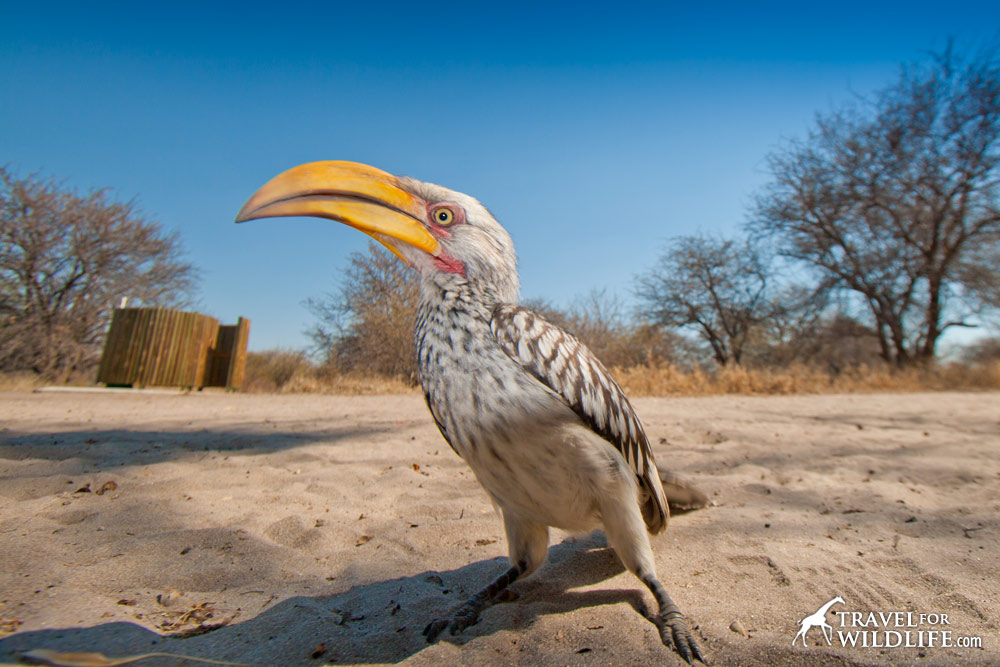
Camping in the Central Kalahari
Within the northern section of the Central Kalahari Game Reserve there are designated but undeveloped campsites at:
- Deception – 6 campsites
- Kori – 4 campsites
- Lekhubu – 1 campsite
- Letiahau – 1 campsite
- Sunday Pan – 3 campsites
- Lengau – 1 campsite
- Passarge Valley – 3 campsites
- Western Link – 2 campsites
- Piper Pan – 2 campsites
- Xade – 2 campsites
For a map of the game reserve and the camping areas check out this map.
Matswere Gate on the north east of the Central is the access point for designated but undeveloped campsites in the region of Deception Valley, Sunday Pan, Leopard Pan and Passarge Valley, whilst the campsites at Piper Pan are more easily accessed from either Xade (west side of the reserve) or Matswere.
Booking A Campsite in the Central Kalahari Game Reserve
Booking a campsite in any of the National Parks and Game Reserves in Botswana is kind of a nightmare and you need to be very organized. The reason is that in 2009, some of the campsites were privatized. Which means they are run by a private company and you must book from them. So if you want to camp some nights at the campsites run by DWNP and some nights at the other campsites you need to be organized when booking.
Our recommendations is to first check with the company that manages the sites for their availability, then check with DWNP with their availability. Then design your route and book as soon as you can to avoid disappointment.
Nightmare is not over though. If you have booked some of the company run campsites, they will send you a voucher. This is a confirmation that you have booked sites in the Central. You then need to FAX (good luck with that!) or send dwnp@gov.bw this voucher to the DWNP office so they can give you a permit. Then you can pay for the permit to DWNP. See what I mean? (update: we just booked our campsites for a Botswana national park, so read through our booking a campsite at the Botswana side of the Kgalagadi National Park post for an up to date info on how to get it done with the minimal headache!)
Honestly, the easiest thing to do is to only stay at DWNP camps, unless you are already in Botswana and can visit both their offices. We did visit the DWNP offices twice, and both times we had a good experience. They were efficient and nice.
The vehicle entry fees (as per 2017) are BWP10 for a vehicle with local registration and BWP50 for a vehicle with foreign registration. These prices are per vehicle per day.
Park Entry Fees – per person per night (2022 prices in Pula)
| Citizen | Resident | Non-Resident | |
|---|---|---|---|
| Adults (>15yrs) | BWP 20 | BWP 145 | BWP 190 |
| Children (8-15yrs) | BWP | BWP | BWP |
| Children (<8 yrs) | FREE | FREE | FREE |
Booking your privatized camp sites:
Big Foot Tours is the company that now manages some of the campsites in the Central Kalahari. This is the list of the campsites that they manage:
- Lekhubu – 1 campsite
- Letiahau – 1 campsite
- Sunday Pan – 3 campsites
- Passarge Valley – 3 campsites
- Piper Pan – 2 campsite
Big Foot Tours Gaborone
Plot 251, Moremi Rd, Ext 5, Gaborone, BOTSWANA
Telephone No: +267 395 3360/391 0927 Email: reservations@bigfoottours.co.bw
Bigfoot Tours Campsites rates – per person per night (2017 prices in Pula)
| Citizen | Resident | SADC | International | |
|---|---|---|---|---|
| Adults (>15yrs) | BWP 88 | BWP 190 | BWP 250 | BWP 350 |
| Children (8-15yrs) | BWP 44 | BWP 95 | BWP 125 | BWP 175 |
| Children (<8yrs) | FREE | FREE | FREE | FREE |
Booking your DWNP camp sites:
You need to book your site in advance as there are only a limited number available within the game reserve. We were always told it had to be done in person at the offices of the Department of Wildlife and National Parks. But you can do it by phone or email (if their internet is working). These are the sites they manage:
- Deception – 6 campsites
- Kori – 4 campsites
- Lengau – 1 campsite
- Western Link – 2 campsites
- Xade – 2 campsites
Be warned: If you are a foreigner, one night of camping will cost you. It is actually $29 -2022 prices- per person per day. Entrance to the reserve is $14 per person/day and wilderness camping is $15 per person/day. Almost as expensive as camping in Key West, Florida. But way better.
Department of Wildlife and National Parks Offices
Maun
P O Box 20364, Boseja, Maun, BOTSWANA
Telephone No: (267) 661265, Fax No: (267) 661264
Physical location: next to the Police Station in Maun.
Gaborone
PO Box 131, Gaborone, BOTSWANA
Telephone No: (267) 580774, Fax No: (267) 580775, Email: DWNP@gov.bw
Physical location: in the Government Enclave of Gaborone, off Khama Crescent, opposite the end of Queens Road
If you want to use the park entrance near Ghanzi (on the north west side of the park), there is a Department of Wildlife and National Parks office in town. If you ask around, you’ll be directed to it. Or you can phone them for directions at this number: (267) 6596323
We found the booking of campsites confusing and just because you’ve been given a site doesn’t mean it will be unoccupied that night. We have driven into our designated campsites to find it already occupied. So it is best not to time your arrival at your site with sunset.
Camping Etiquette
Once you enter the Central, there are no fences. This means your campsite is not enclosed and any animal can walk through at any time. Visitors are warned that sleeping in the open without a tent is dangerous and foolhardy. Keep your tents fastened at all times to prevent scorpions, snakes, etc. from gaining entry. Just like when camping in bear country, don’t keep any foodstuff or toiletries in your tent. Keep everything in your vehicle to avoid unwanted attention from lions, leopards, hyenas and other animals.
Walking in the Central is dangerous. Always stay within easy reach of your vehicle. Visitors may walk in pan areas where visibility is good but avoid areas with tall grass or bushes.
Your pit toilet and shower cubicle has no doors, and lions do wander in. When using them, do check if its unoccupied. Also, keep in mind that bees love water and they’ll appear while you are taking a shower. A good incentive to save water and keep it short.
Packing Essentials
This is a very remote part of the world. It is so remote that you might not see other people for a few days. Be prepared for the unexpected.
Here is what we recommend you bring:
- GPS and a good map. We love Botswana Traveler’s Map by Tracks4Africa (see our review here)
- Extra batteries for your flashlight
- A well-equipped First Aid kit (including a snake bite kit)
- Rehydration solution
- Satellite phone
- Inflatable LED Solar Lantern. These are great for packing and do really work! You can use them by hanging them on your tent or as a table light, for dining under the stars.
- Trail camera. While this is not an essential item, it is so much fun to have around! We always travel with our Bushnell NatureView HD Trail Camera
. Since the camps in the Central are unfenced, you have a big chance of getting a photo of a lion or a hyena walking through your site while you sleep!
If you are traveling from April to September, bear in mind that the temperatures in the Kalahari are very extreme. You will experience the four seasons within one day. It is very cold at night (often below freezing) and very hot during the day. Bring a warm blanket.

Driving
You will be driving on sand so some sand-driving experience is helpful. Here are a few driving implements you should consider bringing:
- 2 spare tires
- electric and manual tire pump
- high lift jack
- shovel
- sand mat (for getting traction to a stuck wheel)
Don’t let the pans fool you. After the rains, the salt dries up forming a crust on top of all that water. Even if it looks dry, it can still be very slimy underneath. Drive slowly and be careful. When you drive over them, the salt crust will break and your 4×4 will sink in the mud. Be prepared to get out.
It’s Worth It
Don’t the let difficulties frighten you, just be prepared. If you long for a truly remote African wilderness adventure, it’s hard to beat the Central Kalahari in Botswana.
Did you enjoy this article? Pin it!
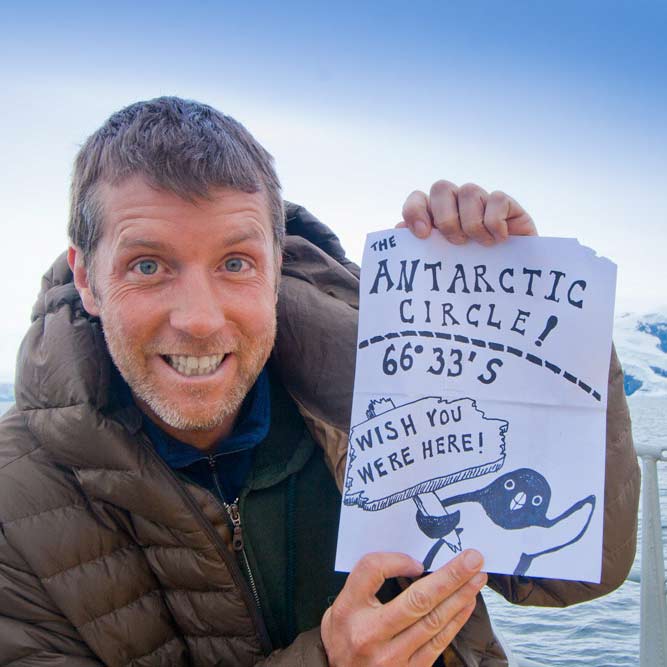
Hal Brindley
Brindley is an American conservation biologist, wildlife photographer, filmmaker, writer, and illustrator living in Asheville, NC. He studied black-footed cats in Namibia for his master’s research, has traveled to all seven continents, and loves native plant gardening. See more of his work at Travel for Wildlife, Truly Wild, Our Wild Yard, & Naturalist Studio.

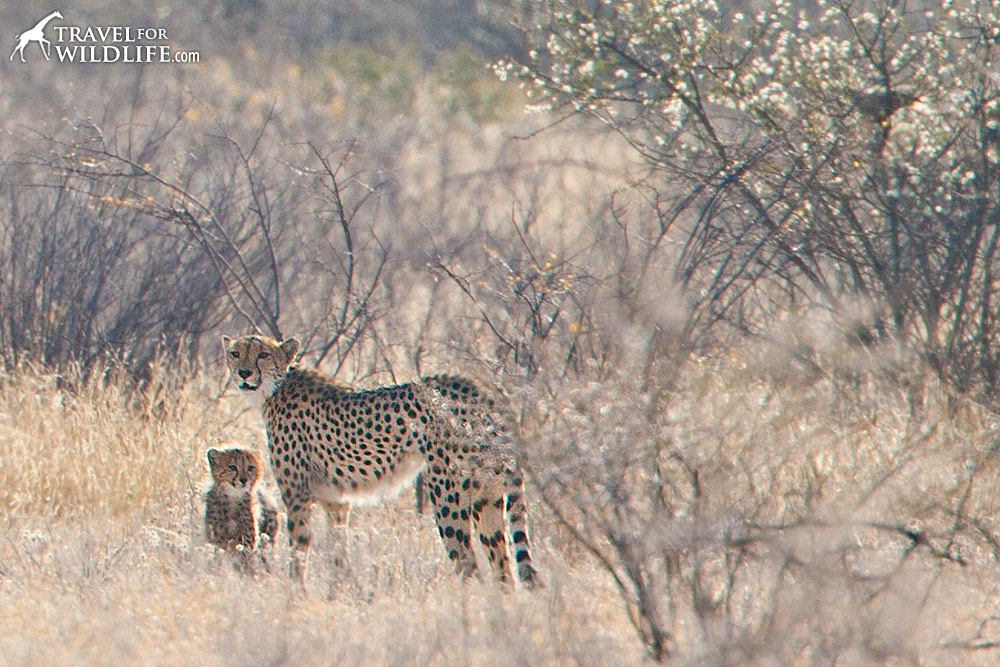


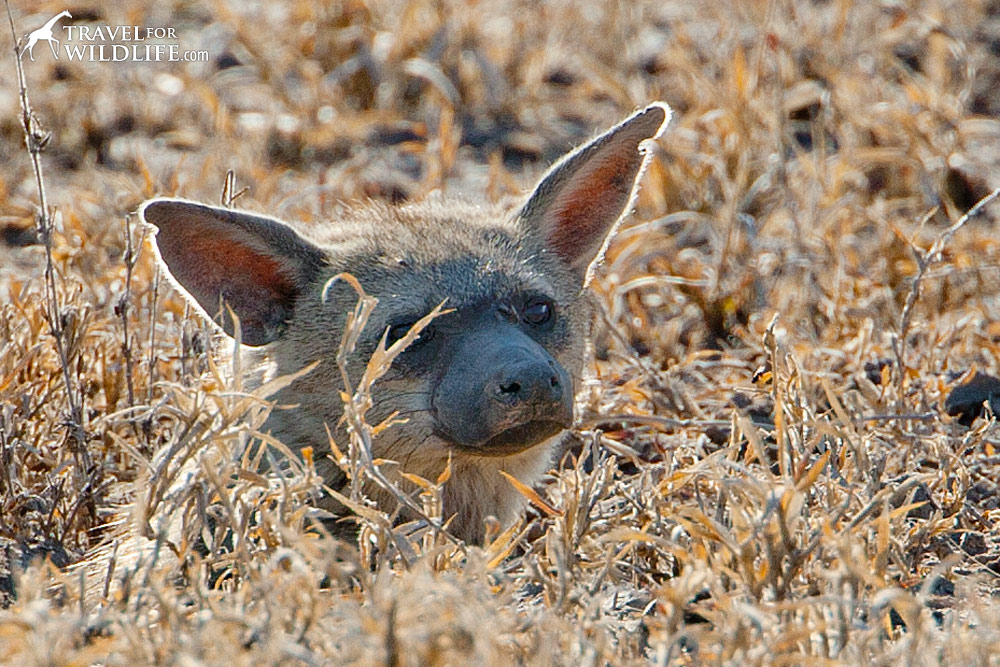

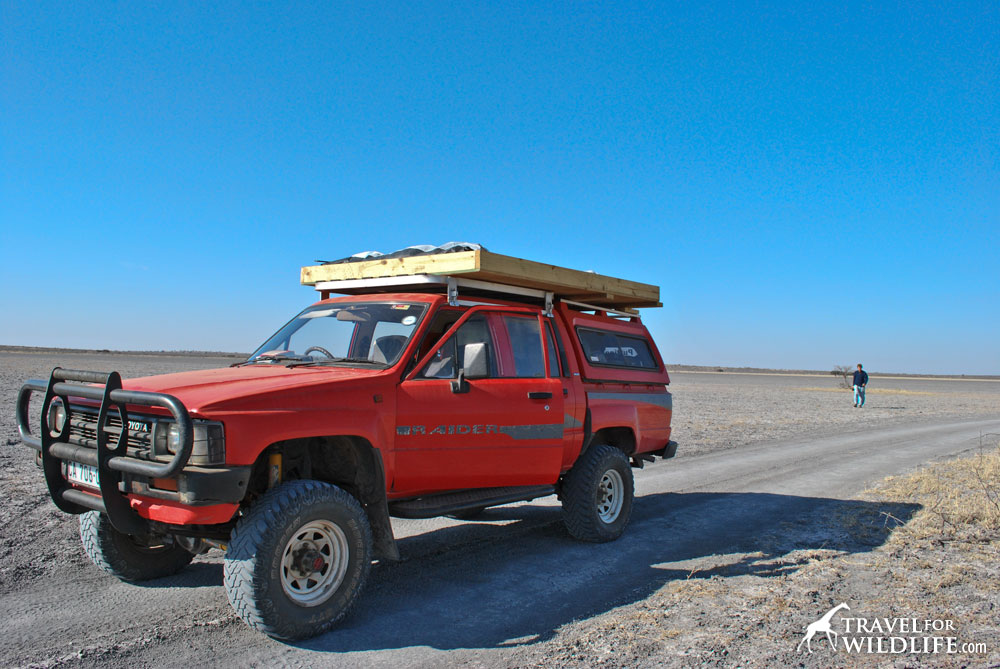
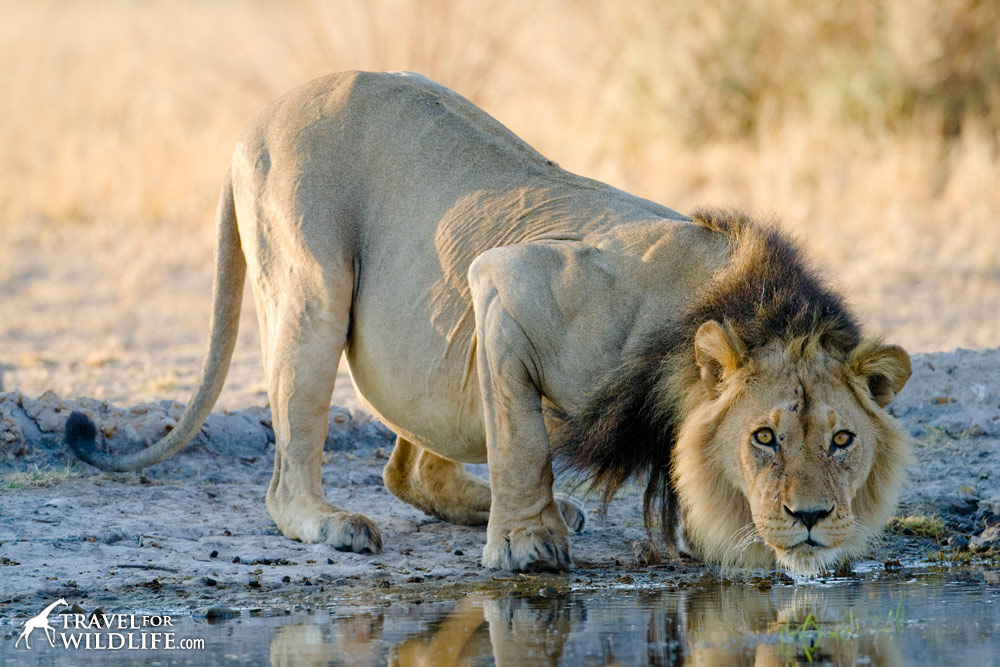


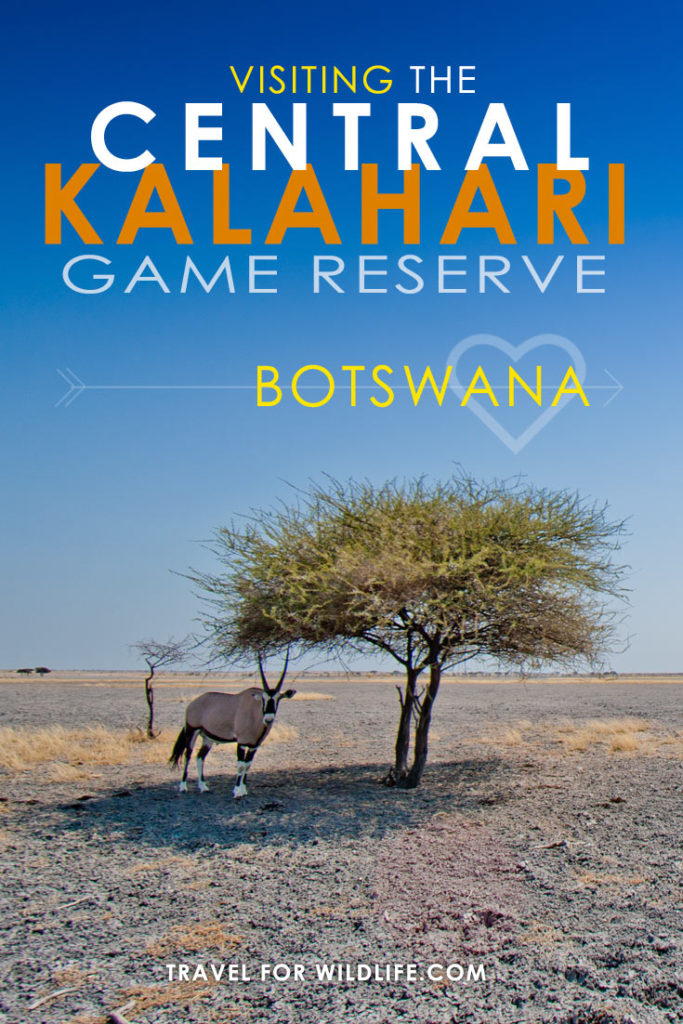
Biduba Badubi
Monday 15th of February 2021
Im pretty sure i will find this information useful. Thank you.
CKGR see u in four months
Rowena
Friday 16th of March 2018
Google maps gives the distance between Maun and Sunday Pan as 305km, but driving time is 8 hours. Is that correct? Going from Sunday Pan to Baines Baobab Google maps says it is 236km with a driving time of 9 hours. Is that correct?
cristina garcia
Monday 19th of March 2018
Hi Rowena, I can't really remember how long it took us but the estimation seems correct. You'll be driving pretty slow as the roads are pretty bad in and around the Central. Cristina
Sue van Straten
Monday 12th of March 2018
Thank you very much for your response, it is greatly appreciated.
Sue
Sue van Straten
Saturday 10th of March 2018
Cristina, Very interesting site. We plan to visit New Xade Khoisan Camp to speak to the people who live there and to photograph them as well. We then plan to go to the Okavango Delta to meet with the Hambukushu. Do you know whether we need to obtain permission to interview and photograph these unique people, and if so where is permission obtained? This is part of a worldwide study on the indigenous people of various countries, and we are looking for experts in Social Sciences and Medical Science to accompany us. We would also need to have someone who is fluent in English and the Dialects of the people in these two areas. Can you please assist me with these, it would be greatly appreciated, as this needs to be conducted by experts in their field of science and technology, preferably with Bachelors Degrees in Anthropology, sociology and psychology. Thanks & Regards Sue
cristina garcia
Sunday 11th of March 2018
Hi Sue, That sounds like a very interesting project! I am afraid we don't have any contacts like that, I would perhaps contact safari providers in Botswana that are known for responsible tourism (see our latest post on responsible tourism in Botswana for some contacts). I would also assume you would need permission to photograph locals (and perhaps you will need to pay a fee, but it is better if you check with anyone before photographing anyone).
Hugo
Wednesday 21st of February 2018
Good Day
How much petrol do we need to take if we want to enter through Khutse, and move all the way up to the North of the camp, over a period of 7-8 days? My vehicle gives me approximately 6km/Liter through thick sand loaded. Or if you can tell me what is the distance from Khutse to the North of CKGR?
cristina garcia
Thursday 22nd of February 2018
Hi Hugo, I have no idea. I would ask on the 4x4 South Africa forum, someone there will probably know.